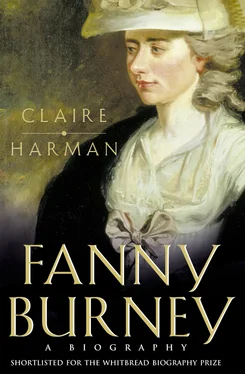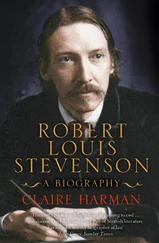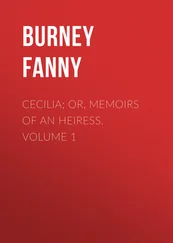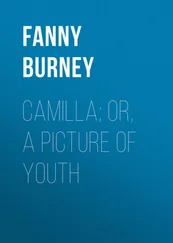But you always charge me to write without reserve or reservation, and so I obey as usual. Else, I should be ashamed to acknowledge having remarked such exterior blemishes in so exalted a character. 18
The description of Mrs Thrale – with whom Fanny later had a famous friendship and an even more famous quarrel – is brief in the original 1777 letter:
Mrs Thrale is a very pretty woman still, – she is extremely lively and chatty, – has no supercilious or pedantic airs, & is really gay and agreeable. 19
In the letter quoted in the Memoirs this becomes a whole paragraph, with the superlative removed from ‘pretty’ and the following qualification added: ‘though she has some defect in the mouth that looks like a cut, or scar’. Giving with one hand in the revamp (‘she is full of sport, remarkably gay, and excessively agreeable’), Fanny is all too ready to take away with the other:
I liked her in every thing except her entrance into the room, which was rather florid and flourishing, as who should say, ‘It’s I! – no less a person than Mrs. Thrale!’ However, all that ostentation wore out in the course of the visit, which lasted the whole morning; and you could not have helped liking her, she is so very entertaining – though not simple enough, I believe, for quite winning your heart.
The last part of that sentence points up a bizarre aspect of Fanny’s rewrite: its ostentatious address to Samuel Crisp. Like almost everyone else mentioned in the original letter, Crisp was long dead by the time Fanny produced her new, longer version, but if anything, she invokes his goodwill and solicits his approval more in the false letter than in the real one. The futility of introducing such material is rather striking. Other sentimental tributes include an interpolation after the mention of the duet played by Hetty and Susan. Not only does Fanny adjust her elder sister’s name to the familiar ‘your Hettina’ (and use the opportunity to insert a jibe against the Thrale party’s lack of musical appreciation), she adds a convoluted and archly-worded eulogy to her father and Crisp: ‘But every knowledge is not given to every body – except to two gentle wights of my acquaintance; the one commonly hight il Padre, and the other il Dadda. Do you know of any such sort of people, Sir?’ Crisp’s answer, had he lived to read this, would have been a firm No , since Fanny never addressed him in her real letters in quite such gushingly intimate terms (though it is possible of course that she spoke like this).
Making up ‘private correspondence’ specifically for publication is a fairly unusual way of asserting one’s authority as a truthful historian. It gives some idea of the lengths to which Fanny Burney would go to create a strong enough impression of what she considered to be the truth. Perhaps it comes as no surprise that none of the best-known stories about her life bears close inspection; each is riddled with contradictory statements, inconsistencies, evidence of editing or elaboration. In the light of this, the extensiveness of the Burney papers begins to look less like a gift to a biographer than an intolerable burden. One begins to long for lacunae like those Cassandra Austen so thoughtfully provided for posterity when she burned her sister Jane’s private papers. And as the Burney archive continues to grow with the recovering of more and more formerly obliterated material, the problem becomes even more complicated. It is fairly obvious in most cases why particular passages in the family papers were suppressed – dullness, scandal, a hasty judgement, a literary blemish – but the reasons why others were rejected remain obscure, or worse, seem trivial. Trivial erasures are the most disturbing of all: the subjectivity of the whole procedure comes sharply before us.
Should we worry about Madame d’Arblay’s second and third thoughts? Are they not as likely to get us near the truth as her original statements did, for all her claims to being able to act like an eighteenth-century form of tape-recorder? As one pores over the details of her life, finding inconsistencies in the record, what is a biographer to make of this strangely creative autobiographer? Is she an inveterate liar, or an inveterate writer? I hope to demonstrate in this interpretation of her life that the layers of autobiographical information left by ‘a writer of romances’ may not be equally trustworthy, but can be equally significant. Fanny Burney understood intuitively that remembering things is a cumulative process, even a collective process, which the act of putting into words helps to arrest. Things didn’t ‘happen’ to Burney until she had put them into words. She then, typically, went on to find more words, and more again. By unpicking the layers of that record we may hope to see more clearly how her anxious and active imagination worked.
Names and problems of identity are centrally important in all Fanny Burney’s novels, which makes it rather ironic that the name of the author herself has become a contentious issue. None of her novels revealed her name on the title page – her first novel did not even sport the conventional tag ‘By a Lady’, and the subsequent ones were attributed to ‘the author of Evelina’, etc. Memoirs of Doctor Burney ‘by his Daughter, Madame d’Arblay’, was the only work she signed in her lifetime. Her diaries, published posthumously, were attributed to ‘Madame d’Arblay’ until the publication in 1889 of the Early Diary , which introduced her baptismal name ‘Frances Burney’. ‘Fanny Burney’, the name by which she was known familiarly until her marriage in 1793 and to the world through Johnsoniana, was adopted in the title of Austin Dobson’s 1903 biography and was used extensively by critics and biographers during the twentieth century, including the eminent Burney scholar, biographer and editor Joyce Hemlow. This is the name under which the Burney Project is publishing her Journals and Letters and Early Journals and Letters even though a number of critics, notably and most eloquently Margaret Anne Doody, have been arguing since the 1980s that the diminutive is a patronising form which should no longer be tolerated. ‘It makes the author sound the harmless, childish, priggish girl-woman that many critics want her to be’, Doody has written. ‘Let her have an adult full name’. 20
But which ‘adult full name’? It comes in many forms, making the search for material in catalogues and indexes peculiarly time-consuming. She is variously listed under A [Arblay], B [Burney] and D [d’Arblay], sometimes, as in the London Library, under all three. As preparations are made to raise a memorial to the author in Westminster Abbey, an ardent debate is taking place among members of the Burney Society on both sides of the Atlantic as to which name will appear, with the threat of an absurd compromise: ‘Frances (Fanny) Burney d’Arblay’. 21 Bibliographical convention would dictate the use of her name at death, Frances d’Arblay, but no one seems happy with that; it is unfamiliar. Similarly, though ‘Frances Burney’ is used on the title pages of several modern reprints of her novels, ‘correctness’ rarely extends as far as the cover, where the author is most often still known as ‘Fanny Burney’, presumably because it is more recognisable to the reading public.
I have decided to use the latter style (interspersed with her married name in the later part of her life), despite the danger of appearing overfamiliar. In a work of criticism, I feel that the more formal ‘Burney’ or ‘Frances Burney’ would be correct throughout; in a biography, that deals with a subject from earliest childhood, the informal name is often more appropriate. I have also used familiar versions of some names within the Burney family which are subject to confusion through multiple use; to distinguish between Fanny’s mother and sister I have called the first Esther and second Hetty, and have used the familiar shortening of Susanna Burney’s name to Susan and Frederica Locke’s to Fredy on the grounds that they were Fanny Burney’s intimates. Her father is called Charles Burney (Dr Burney after 1769), her brother Charles Burney Junior (although he too gained a doctorate in 1808). Her husband is referred to as d’Arblay or M. d’Arblay, and their son, who was given the anglicised form of his father’s Christian name, as Alex.
Читать дальше












